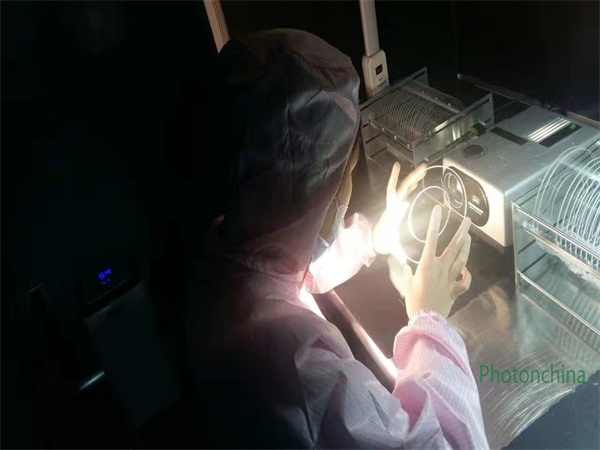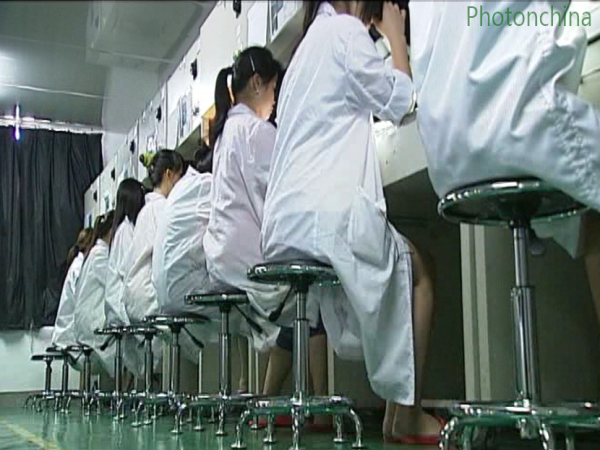Comparison of Beam Divergence, Beam Diameter and M2 - laser beam divergence
How to clean dichroic mirror
Optical coating performance determines the function of this device. Devices with high requirements in particularly are not allowed to have decreased performance due to surface defects. Therefore, paying attention to the surface quality should be maintained throughout the whole process of coating process.
Surface quality describes the level of imperfections that can be visually noted on the surface of an optical component. These imperfections consist of scratches, dig (little pits), bubbles, edge chips, and coating blemishes. Among them, the scratch and dig, clearly indicated in the standards of MIL-PRF-13830B, are widely used in the optical industry. a surface quality of 60-40, for instance, permits a scratch of 0. 06mm (60 microns, or 0.0024”) and a dig diameter of 0. 40mm (400 micron, or 0.0158”).
In-process cleaning mainly refers to the time when optical parts have finished grinding and polishing. Grinding and polish are important process to determine the surface quality of optics and manufacturing efficiency. So, the cleaning for first time generally takes place after grinding and polishing.
Relevant data show that when the laser is injected into the scratch on the surface of K9 glass, the electric field intensity at the scratch increases by 2.3 times, which affects the performance of laser resistance. The high reflectivity of laser gyro mirror is required to be ≥ 99.94%. Any defects on the substrate and film surface will affect the reflectivity.
In consideration of a certain cleaning agent, it is necessary to consider its corrosiveness and other characteristics that will impact on optics.
Best way to cleanoptics
After the finish of substrate polishing and before sending them to optical coating, therefore, cleaning plays a vital role in determining the result of coating.
Compressed Airfor optics

Avoid touching the surface of the optic with unprotected fingers. Always wear powder-free gloves or finger cots. The first step in cleaning any kind of optic is to remove dust or loosely held particles by blowing them off the surface using a dust-free blower or a camel hair brush. This reduces the chance of scratching the optic during the actual cleaning.
Photonchina offers full cleanroom environment ultrasonic cleaning, inspection, and vacuum packaging to ensure the highest level of cleanliness and protection for our customers.
A final wipe with methanol is recommended since methanol does not leave streaks on the surface like acetone. Isopropyl alcohol is also effective, but it too can leave streaks like acetone. It is usually better for cleaning laser optics exposed to particles (in an uncontrolled environment or outside of a vacuum chamber).
If stronger cleaning is required, then the next step will be to wipe using lens tissue paper along with methanol and acetone.
The main pollutants in the grinding and polishing process are polish powder, asphalt, and paint residue, in some cases. The cleaning solution after grinding can be roughly divided into two types: organic solvent cleaning agent and semi water based cleaning agent.
Bestcleaning system for critical optics
Photonchina provides proper materials, techniques, and handling procedures to minimize the risk of damage. There are 5 methods below to have an efficient and reliable procedure for precision optics cleaning in our production.
Cleaning before coating. The main pollutants of cleaning before optical coating are oil, fingerprint, dust, etc. As the coating process has a stringent demand on the cleanliness of optical components, the choice of cleaning method and cleaning agent, if applicable, is critical.
In modern optical technology, optical parts tend to become functional devices after coating process. They are usually required to have an excellent surface quality before and after coating, such as high-power laser thin film devices and high reflectors used on laser gyroscopes. The roughness of the substrate should be less than 1.5nm or even reach at 0.8nm.
Ultrasonic cleaning is a very efficient form of precision optics cleaning where dirt particles are completely and rapidly removed from the surface of optics. It has the following benefits,
If the optic contains contamination in the form of grease (fingerprints, etc.), it will need to be cleaned with a soap solution. The soap solution should be a nonabrasive, mild solution without any additives.





 Ms.Cici
Ms.Cici 
 8618319014500
8618319014500